A stuffed kabocha squash recipe that is a perfect blend of flavorful ingredients packed into a wholesome squash. This vegetarian and gluten-free dish combines brown rice, fresh spinach, olives, mushrooms, and feta cheese for a delightful, nutritious, and satisfying meal.
We started experimenting with this stuffed kabocha squash recipe a few years ago when we noticed squash was plentiful during winter. At the time, we were looking to eat more vegetarian meals.
I had been thinking of my mom’s stuffed bell peppers that I enjoyed as a child, but Rhonda wasn’t a fan of green peppers as her main meal. This offered me the perfect opportunity to get creative.
In addition to wanting our meals to focus toward a Mediterranean diet, they also needed to be gluten and dairy-free. By using non-dairy feta cheese, we ensured the recipe stayed dairy-free without losing the rich flavors we love.
Now, we often turn to this dish during the squash season, especially when we’re aiming for a lighter yet fulfilling dinner. It’s straightforward, nutritious, and fits perfectly into our autumn meal rotation, whether we’re dining alone or hosting friends.
What you need to make stuffed kabocha squash
- Kabocha squash
- Brown rice
- Olive oil
- Spinach
- Olives
- Mushroom
- Almonds
- Feta cheese (Non-dairy feta, if you are making it vegan)
- Vegetable stock
- Spices: Thyme, cayenne pepper (optional), salt and black pepper
What is kabocha squash
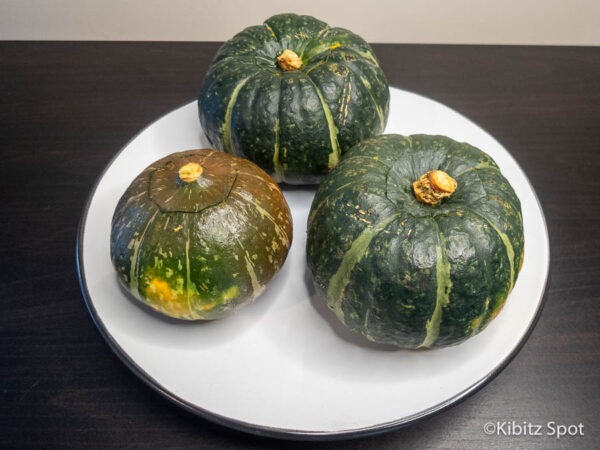
Kabocha squash, often referred to as Japanese pumpkin, is a winter squash that has gained popularity for its sweet flavor and velvety texture, which reminds me of pumpkin and sweet potato combined.
What sets kabocha apart from other popular squashes like butternut or acorn is its dense and creamy flesh, which makes it ideal for baking and pureeing. The skin of kabocha squash is edible when cooked, although I don’t eat it.
Its dark green skin and apple-like shape make it easily recognizable. Rich in beta-carotene, vitamins, and fiber, kabocha is a nutritious addition to our dinner, but more importantly, we like the flavor.
Get creative with other additions or substitutes
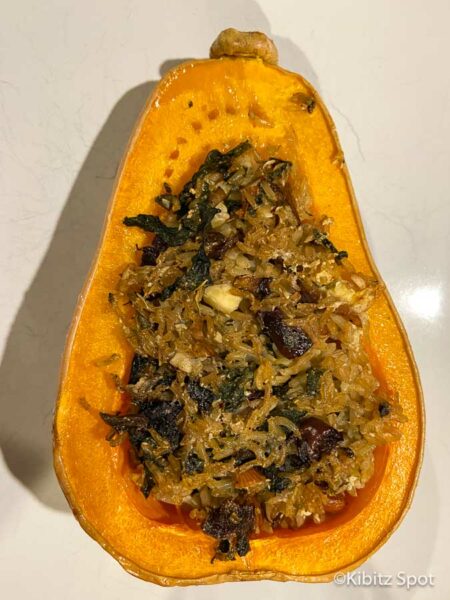
This is one of those recipes that we love as is, but frequently alter anyway. Sometimes, it’s because we don’t have an ingredient; other times, it’s to satisfy a craving or to use ingredients in the house. Here are some of our favorite additions:
- Quinoa
We often replace the brown rice with quinoa for a different texture and a protein boost. - Kale
You can replace the spinach with kale for a slightly different flavor profile. At our house, kale is my wife’s favorite vegetable. Swiss chard can also be used. - Pine nuts
Another favorite substitute is to add pine nuts instead of almonds for a more buttery, subtle flavor. - Sun-dried tomatoes
Add chopped sun-dried tomatoes for a tangy flavor, complementing or replacing the olives (we typically add both if we are using the sun-dried tomatoes). - Goat cheese (if dairy is acceptable) or vegan goat cheese
Used instead of non-dairy feta cheese for a creamier, tangy flavor. - Butternut squash
This is a fun alternative to kabocha squash, with a slightly different sweetness and texture. Plus, one butternut squash usually serves the two of us and sometimes even has leftovers.
Tips for making stuffed kabocha squash
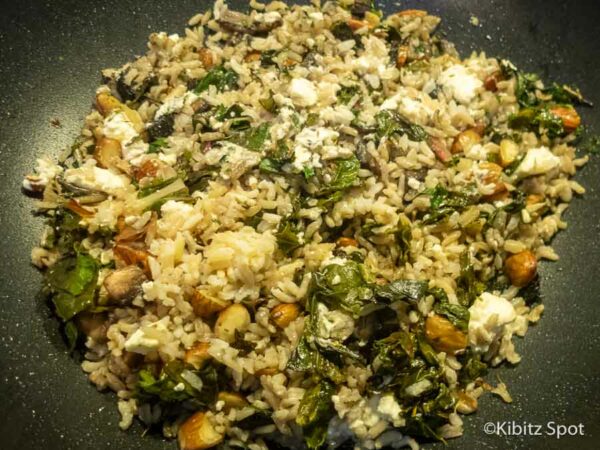
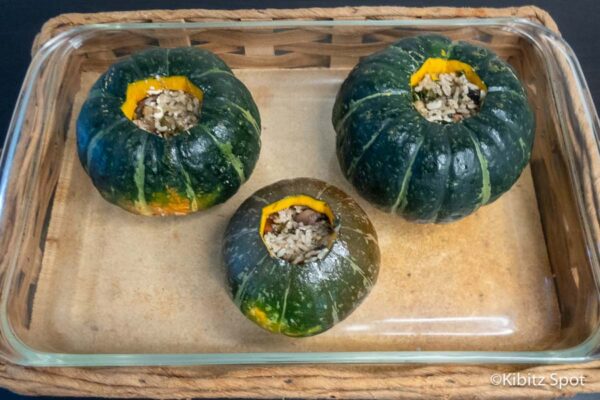
- We typically get our produce delivered, and we use it before it turns soft or discolors. If we shop ourselves, we look for firm, unblemished, heavy squash. (Heavy indicates that it is not dried out.)
- If the squash is small, we cut a hole in the top and fill it from there. For larger squash, we cut them in half from stem down, and fill each side.
- If you are not dairy-free, consider adding more feta, and less rice, creating more of a kabocha and feta bake.
- Be sure to scoop out all the seeds and stringy bits thoroughly. And, don’t discard the seeds, but roast them instead.
- Start with the veggies when making the stuffing, and sautéing them just until they begin to soften. Then add the other ingredients per the recipe details below.
- You can estimate how much filling you need by filling the emptied squash(es) with water and then pouring the water into a measuring cup. Use the same amount of cooked rice as the measured volume of the squash.
- The squash should be tender to the touch and the filling hot all the way through when done. Check doneness by piercing the squash with a fork; it should slide in easily without much resistance.
Serving suggestions
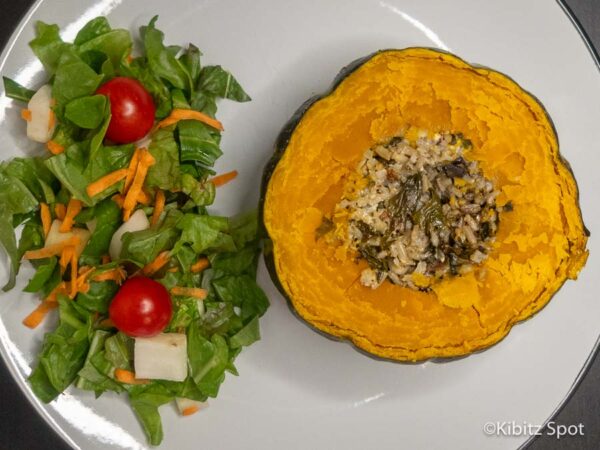
We typically pair the stuffed kabocha squash with a side salad to balance the richness of the dish. However, on nights we want only hot food for dinner, we may serve it alongside some roast vegetables, leaning towards things like cauliflower and broccoli and away from carrots to keep the plate from appearing monotoned.
While some people serve it with bread, we don’t as we feel we have enough carbs between the squash and the rice.
After dinner, check out any of our favorite desserts.
Some readers have asked . . .
Can I make this recipe vegan?
Yes, you can easily make this stuffed kabocha squash recipe vegan by substituting the feta cheese with a vegan cheese alternative. Ensure all other ingredients are vegan-certified, particularly the chicken stock, which can be replaced with vegetable stock.
Is this recipe suitable for a gluten-free diet?
Absolutely! This stuffed kabocha squash recipe is naturally gluten-free as it uses whole ingredients like squash, vegetables, and rice. Always check the labels of packaged ingredients like stock and spices to ensure they do not contain gluten or were processed in a facility with gluten products.
How can I store and reheat leftovers?
Leftovers can be stored in an airtight container in the refrigerator for up to three days. To reheat, place the squash in an oven-safe dish, cover with foil, and warm in a preheated oven at 350°F for about 15-20 minutes or until heated through. Alternatively, individual servings can be microwaved on high for 2-3 minutes.
Our stuffed kabocha squash recipe
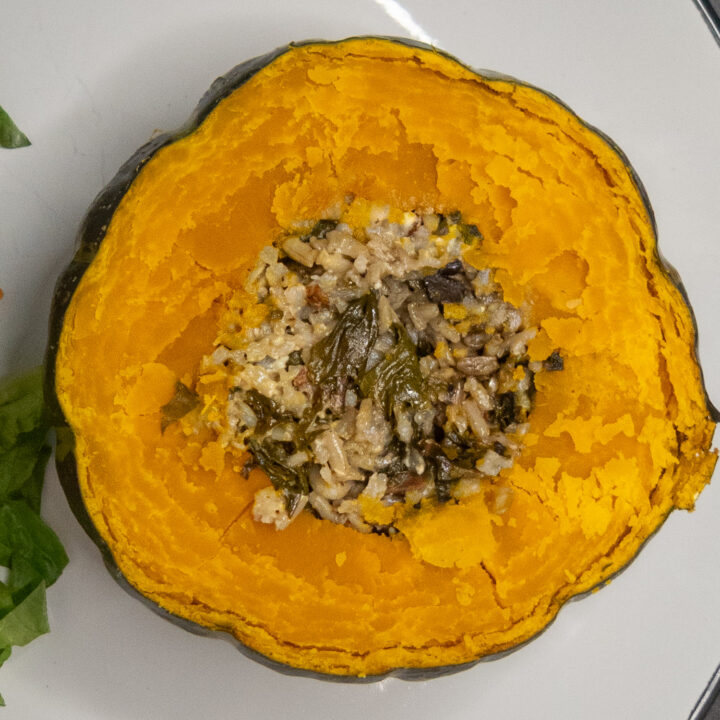
Stuffed kabocha squash recipe
Wholesome, stuffed kabocha squash packed with flavorful, healthy ingredients like brown rice, spinach, feta cheese, and almonds.
Ingredients
- 4 small kabocha squash
- 2 cups brown rice, cooked
- 1 teaspoon olive oil
- 2 cups spinach, chopped
- 2 Tablespoon olives, sliced
- 2 ounces mushroom, diced
- 3 Tablespoons almonds, slivered or roughly cut
- 3 ounces feta cheese, crumbled
- ½ cup vegetable stock
- ½ teaspoon thyme
- ¼ teaspoon salt (optional)
- pinch black pepper, ground
- pinch cayenne pepper (optional)
Instructions
- Preheat your oven to 400°F (200°C).
- Cut a lid in the top off of the squash (bocchan or buttercup) or slice the top off if you prefer. Scoop the seeds and membrane from the inside of the squash. You can set the seeds aside to make roasted 'pumpkin' seeds.
- Mix the stock, thyme, salt, pepper, and cayenne (optional) in a bowl.
- Saute the spinach, olives, mushrooms, and almonds in a saucepan or wok for 2-3 minutes.
- Add the cooked rice and stock / spice mix to the saucepan, stir through, and then crumble the feta cheese in and mix till the feta starts to melt (another 2-3 minutes).
- Stuff the inside of the squash with the sauteed mixture and firmly pack it with the back of a spoon.
- Place the squash (and lid / tops) on an oven safe tray. Do not cover the stuffed squash with the tops.
- Bake the squash for 45 minutes.
- Remove the tray from the oven and serve the squash with the lid / top either capped or on the side.
Notes
Buttercup and kabocha squash come in various sizes so you may need less or more 'stuffing'.
You can estimate how much filling you need by filling the emptied squash(es) with water and then pouring the water into a measuring cup. Use the same amount of cooked rice as the measured volume of the squash.
As some feta cheeses are quite salty, you may want to leave out the additional salt. If you are on a low sodium diet, use a low sodium feta and omit the salt. The creamy and nutty flavor will shine through.
Nutrition Information:
Yield: 4 Serving Size: 1Amount Per Serving: Calories: 461Total Fat: 10gSaturated Fat: 4gTrans Fat: 0gUnsaturated Fat: 5gCholesterol: 19mgSodium: 517mgCarbohydrates: 85gFiber: 17gSugar: 26gProtein: 17g
Nutritional information isn't always accurate and it will vary based on the specific ingredients used.
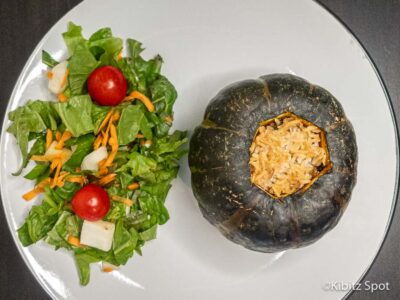

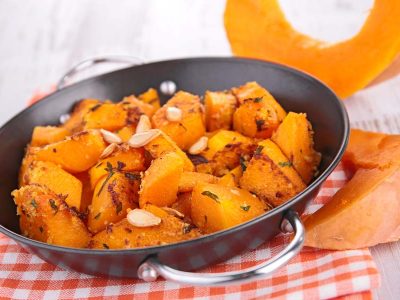
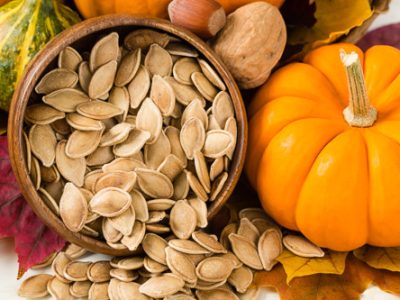
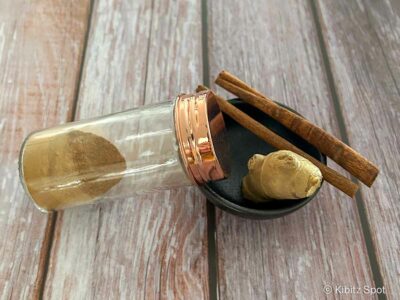
Leave a Reply